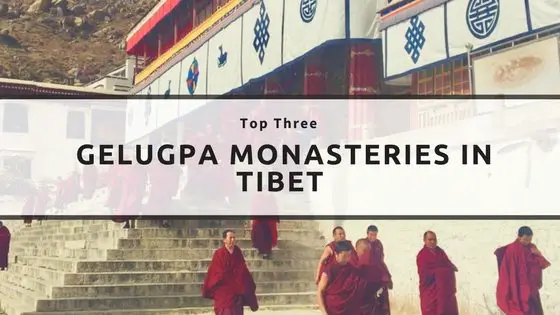Gelugpa is the latest school of thought that has risen out of Tibetan Buddhism. Gelugpa sect, also known as the Yellow Hats Sect, was founded by Tsongkhapa in 15th century. He led the life of a vagabond travelling all around Tibet and studied under various teachers. Although it is the newest and youngest school of thought, Gelugpa sect is considered as the purest form of Tibetan Buddhism.
In 17th century this school of thought became very powerful and was practiced widely. Throughout his adult life, Tsongkhapa travelled around Tibet to gather students and teach them. His students and admirers founded the Ganden Monastery. He soon died and his ardent disciples gathered together and built a school based on his teachings. This school came to be known as the Gelugpa which holds the meaning ‘virtuous tradition’. Soon monasteries following Gelugpa school of thought was built all around Tibet and the world. Certainly, if you are a devout Buddhist, it is also a wise option to travel to Tibet from Nepal.
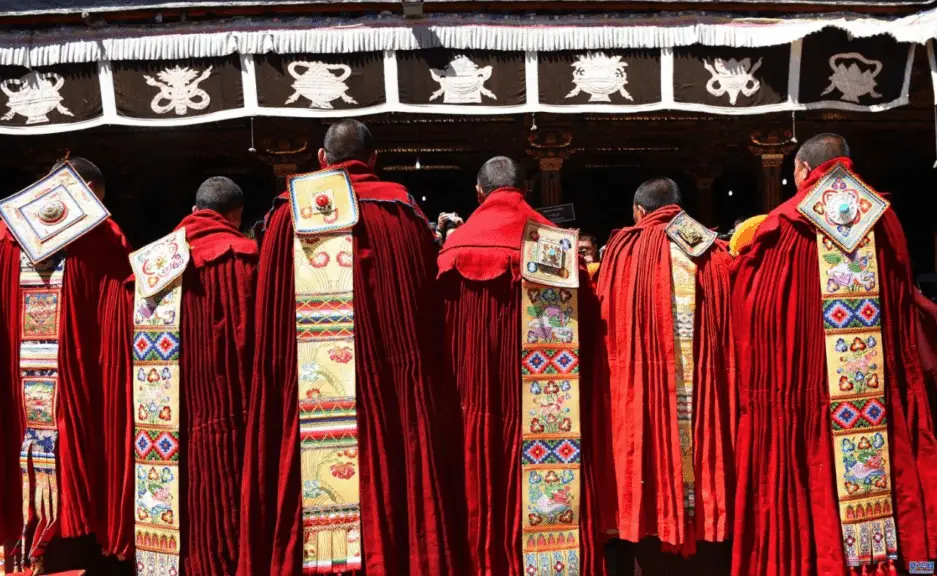
GANDEN MONASTERY
Being the primary monastery for Gelugpa Sect, this monastery was built as early as 15th century. Founder of this school of thought, Tsongkhapa spent final days of his life in this monastery which makes it even more special and has earned an indisputable important status among the Gelugpa sect monasteries. Ganden monastery is located at an elevation of 3,800m on Wangbur Mountain. It is 47km from Lhasa City and located near the southern bank of Lhasa River. This large monastery consists of more than 50 buildings like pagodas, shrines, chambers, prayer halls, chapels, and assemblies. The Tsochin Hall is the biggest hall with over 100 massive pillars adoring the huge hall.
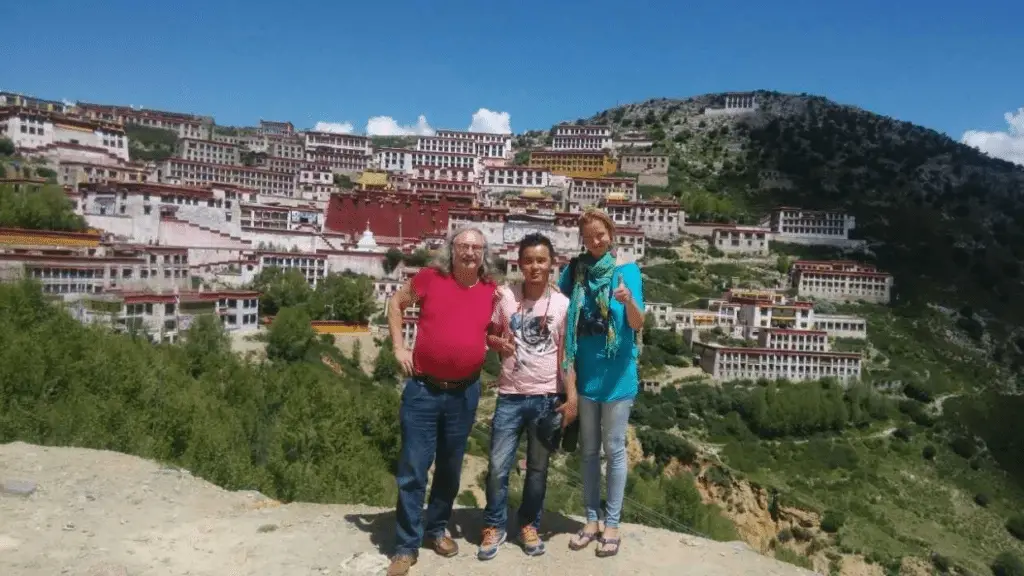
Standing stunningly on the mountain side at a high elevation, the distinctive white walls and red roofs paint the scenery of this place. A famous building in this monastery is the Tri Thong Khang, which was Tsongkhapa bedchamber and continued to be so for the successors too. Lima temple, Shargtse Dratsang, Jangtse Dratsang, Yangbajian Sutra Hall, the main monastery are the main attractions to cover in the vast monastery.
Many roofs of these buildings are gold plated. The Tsongkhapa Butter Lamp festival is one of the most important festivals celebrated int his monastery. People from surrounding villages also participate in this festival. This is a festival is celebrated to mourn the death of the founder. During the day, you will find a 26m long tapestry of Buddha hanging outside the monastery. And during the night, thousands of butter lamps are lit and followers pray all night long. The preparation for butter lamps start days in advance.
You can either visit the monastery for a day or hike around the monastery. You can do a Kora trek which involves walking in a clock wise direction around the monastery. You can also go for a four day hike from Ganden Monastery to Samya Monastery; it is an 80km trek which takes about 4 days. You will be hiking through small valleys, across temples, lakes, hill tops, villages, and experience authentic Tibetan food. This monastery is also a great place to capture some amazing pictures. June, July, and August months are ideal for photography.
SERA MONASTERY
Sera Monastery was built in the year 1419 and is located just 2kms from Lhasa. Sera Monastery means wild roses monastery as it was built in an area where wild roses bloom every year. The monastery is known for its complex structures and peaceful, calm ambiance with the mountains surrounding the monastery. This monastery is also known for the debate sessions that take place between the monks. The monastery includes the main assembly hall and several other buildings in the eastern side and three educational institutes in the other side. The monastery located on rocky mountains with halls, dorms, colleges, and palaces is a truly interesting place to explore and learn about the Gelugpa school of thought.
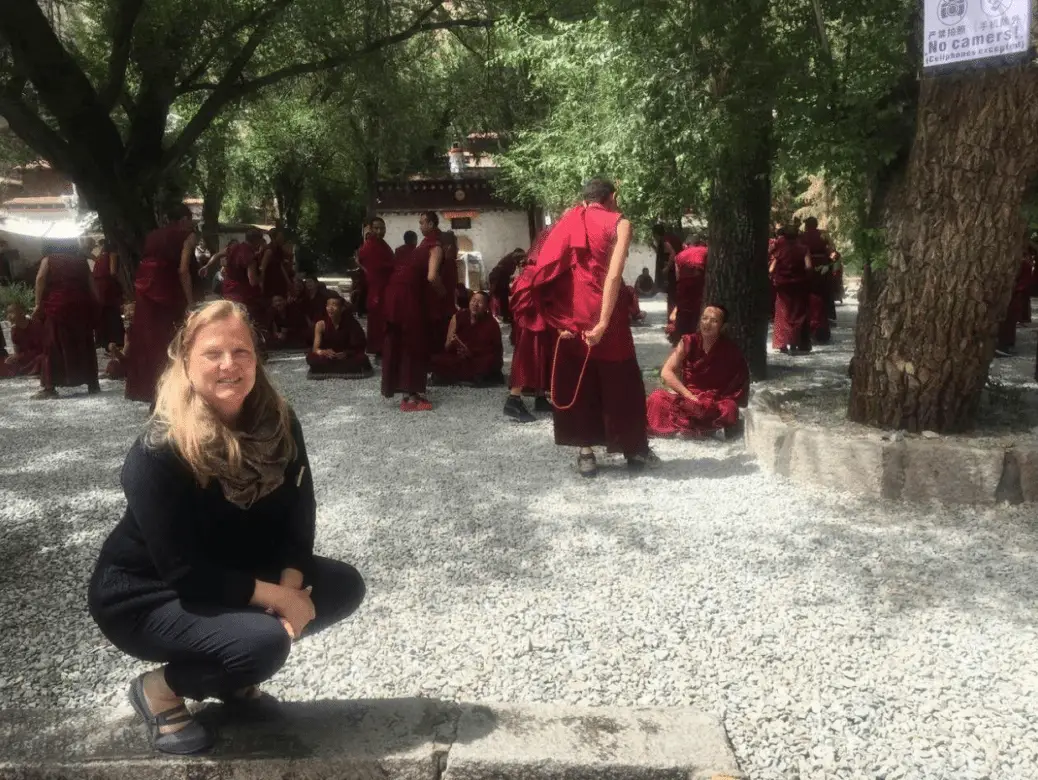
Some of the highlights of this monastery include Tsochen Hall, Coqen Hall, Zhancang, Kamcun, and Sera Je College. Kamcuns are the dormitories where monks dine and sleep. Apart from tea houses and beds, Kamcuns have separate halls where monks can read doctrines. The debates take place at the debating courtyard every day except Sundays. It starts at 3pm every day, visitors are allowed to take pictures of the debate in mobile phones, DSLRs and any other cameras are not allowed. Tsochen Hall is the main administrative hall and consists of five Buddhist chapels and a scriptures hall. The Sera je College is the largest of the three colleges and has many statues of Buddha and stupas. The statue of Hayagriva located in the chapel inside the college is visited often by locals to pray and touch his feet. It is believed that he is able to ward off all the evil spirits. Coquen hall is a four storied building where many important rituals take place.
The main festival celebrated in this monastery is the Sera Bengqin Festival. Sera Bengqin Festival is held exclusively at Sera Monastery and thousands of Tibetan Buddhist monks come from all around the country to take part in it. This festival involves blessing the monks with Vajra Pestle which is known as the ‘Dagger of Exorcism’. While the monk debates might be the highlight of the monastery, there are beautiful landscapes and rocks painted around the monastery which also makes it an ideal destination for photography.
DREPUNG MONASTERY
Drepung is the last of the three important Gelugpa monasteries in Tibet. It is located in the foothills of Gambo Utse Mountain; it is just 5km from suburban Lhasa. Drepung means collecting rice and it was named so because, from afar, the monastery looks like a white heap of rice on the side of the mountain. It’s a relatively large monastery covering 250,000 sq.m. of area. The monastery was established in the year 1416 by one of Tsongkhapa’s disciples. At one point of history, Drepung Monastery was the largest monastery in Tibet and housed as much as 10,000 monks in the monastery, today there are only around 700 monks.
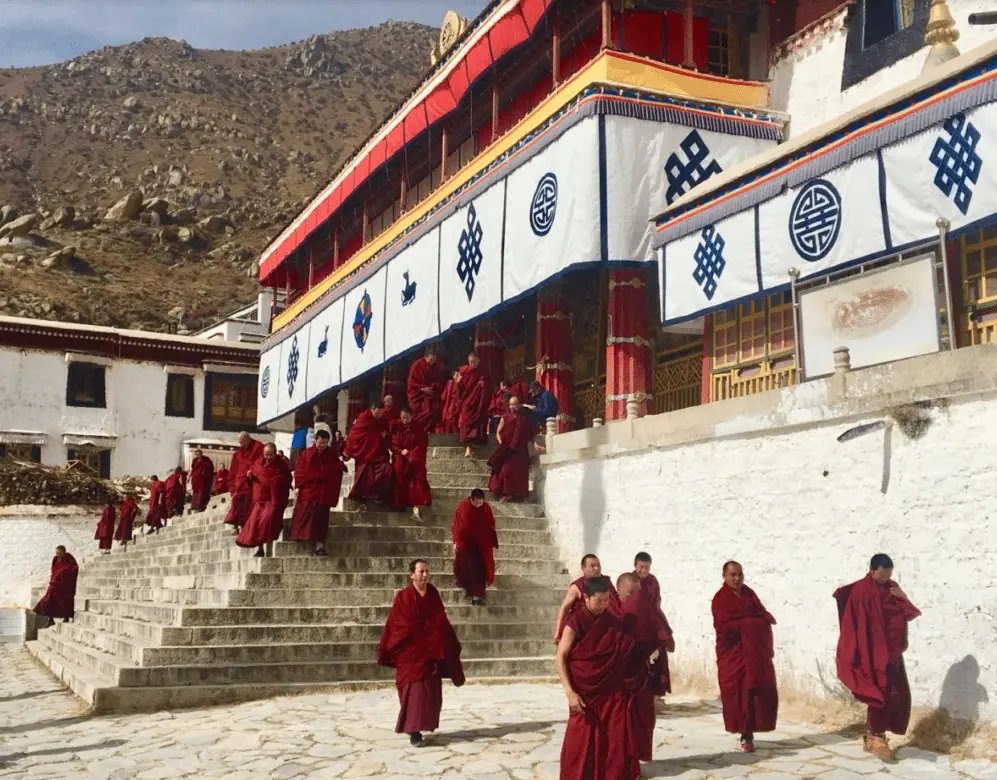
This monastery is also dedicated to teaching Buddhism. There are totally four academies out of which three teach Exoteric Buddhism and one teaches Esoteric Buddhism. Many Dalai Lamas have studied at Drepung Monastery because of which it is respected as the ‘Mother Monastery of Dalai Lamas’. In fact before Potala Palace was constructed, Drepung Monastery was the political and Buddhist centre. The most respected and revered image at the monastery is the 15m high statue of Maitreya Buddha which was designed by Tsongkapa. There are many courtyards in the surrounding forest. There is a sacred mirror in one of the chapels which is said to cure facial diseases when stared into it. The Ganden Potrang in this monastery, built by second Dalai Lama, was the home to Dalai Lamas until Potala Palace was built. There are many such highlights in this palace.
The main festival celebrated in this monastery is the Shoton Festival. It is a grand festival where people from all over Tibet come to witness it. The main highlight of this festival is the unfurling of giant thangkas of Buddha. It is about 80m long and 40m wide. About 100 monks carry it to a special platform meant for unfurling the thangkas. After the unfurling many Tibetan traditional dances and Tibetan opera performances take place. With good food and festive mood, the whole place is vibrant with positive energy. Tourists can take part in the festival and if you wish to take pictures of the festival, it is advisable that you go there early in the morning before it gets very crowded.
The tourist experience in each of these monasteries will be unique and interesting. It will not be just about the history of the monasteries and the religion; it will also be an enriching experience about the culture and way of life of the monks.


